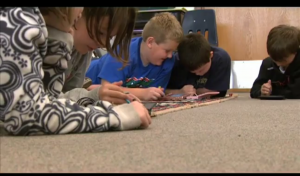For those wondering what a game-based classroom looks like in a traditional school, take a peek into Ananth Pai's third-grade class in Parkview/Center Point Elementary school in Maplewood, Minnesota.
Using his own money and grants that he applied for, Pai has managed to round up seven laptops, two desktops 11 Nintendo DS's, 18 games for math, reading, vocabulary, geography, and 21 digital voice recorders.
Students compete in games with other kids across the world, learn about fractions and decimals by riding a virtual ghost train, for instance, work on their reading skills on sites like Razkids, figure out whether they can make a living by growing flowers, learn about their constitutional rights with the Go to Court Game, and so on.
If parents are wondering what their kids do with the Nintendo DS in the classroom, Pai's students will tell them about Brain Age 2, the word scramble game, or Math Blaster, which helps students practice their multiplication.


